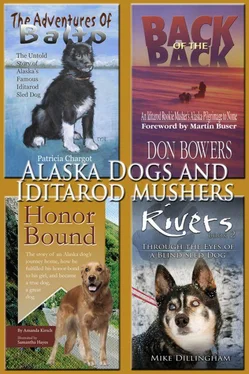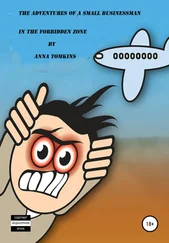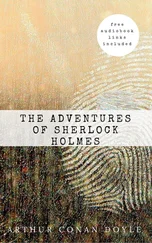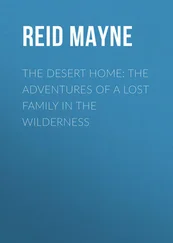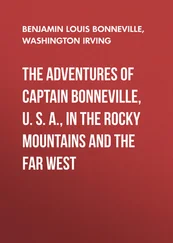There’s no way to get a snow hook into the crust securely enough to stop the team. The only way I can inspect booties and straighten out tangles is to gently talk the dogs into stopping, set the hook as best I can, and lay the sled over on its side atop the hook. Then I figure I have a couple of minutes before the dogs get restless and start to go, dragging the overturned sled and the scraping hook, albeit slowly enough to allow me to easily catch them.
Fortunately things are going fairly smoothly. I do have one problem, though: my brand-new, top-quality dog booties are wearing through frighteningly fast on these abrasive trails. Normally the booties should go 60 miles or more, but my bigger dogs are blowing them out in as little as 15. This is disturbing, if for no other reason than the booties cost 70 cents each and I don’t have an unlimited supply. Even worse, snow and ice will pack into a bootie with a hole in it, and the net result will be to amplify any damage to the dog’s foot. I’m worried I’m doing more harm to feet by inadvertently running holed booties than I would if I didn’t bootie at all.
Finally I stop and rip off all the booties on the bigger dogs, except for a handful of sensitive or already-injured feet which must stay wrapped. I figure the dogs won’t be any worse off without booties, and besides, we’ve been training on hard, icy trails at Montana Creek all year and their feet have held up pretty well so far. In any case, I’ll give them all a good check at Yentna Station when we get there later this afternoon and decide what to do down the road.
As the day wears on, the dogs start to slow down, to perhaps six or seven miles an hour. This is a normal phenomenon: dogs tend to run more slowly during the day, and especially when they’re out in wide-open spaces like rivers and lakes. Nobody seems to know why, other than dogs are mainly nocturnal and just don’t like to be exposed to the glare of day. I personally think they just get bored looking at miles and miles of nothing but miles and miles. At least at night their universe has bounds; out here on the broad river in the bright sun, and from their next-to-the-ice viewpoint, it just looks like a lot of white.
Another problem is overheating — even at 20 below. All of the dogs are extremely well insulated, and their coats are especially thick this year because of the bitter cold we’ve had at Montana Creek. On a windless day like today, with the sun additionally warming the darker-coated dogs, they generate enough heat trotting to stay uncomfortably hot.
Many of them try to “dip,” or grab a mouthful of snow from the trail on the fly; sometimes the less-adept ones will lose their footing and flop comically down for a second or two before bounding back to their feet. Once in awhile one of them does a truly Chaplinesque pratfall on a patch of ice and gets tangled; then I have to stop the team and go straighten out the miscreant, who often as not is already up and ready to go by the time I get the sled completely stopped.
I only meet one team on the Susitna; I chat with the other driver for awhile as we run together. He spent the night on the river, apparently not wanting to risk the unfamiliar trail in the dark. Then his team got away from him this morning and he was just recovering them when I came by. He keeps stopping for various reasons and drops slowly behind as my team keeps up a steady if not exactly blistering pace.
For the next five hours we trundle down the Susitna and up the lower Yentna. I’ve seen the Yentna several times before on the back of a sled, on both the Knik 200 and the Iditarod last year. Of course, I’ve flown over it so many times I can recite the landmarks in my sleep, which still doesn’t make things go any faster. The only breaks in the numbing monotony are dozens of snowmachines roaring up the trail, some of whose drivers courteously stop while my team goes by.
I also get passed by a pickup truck hauling a 500-gallon fuel tank to a lodge on up the river. In fact, the snow is so thin this year a few brave souls have driven vehicles all the way to Skwentna. Even more than in most years, the frozen river has become an all-purpose extension of the state’s minuscule highway network.
Finally we round a big horseshoe bend as dusk is falling and see the lights of Yentna Station on the far bank. Half a dozen teams are there, including leaders John Barron and John Schandelmeier, who have already been out to Skwentna and are on their way back to Big Lake. I ask the checkers where everybody else is, and they tell me 12 teams have scratched — almost half of the original starters in the race. Martin Buser and several of the other big names have dropped out, some because they didn’t want to risk their teams on the bad trails and some because they got lost or didn’t feel they had a chance at the money. Others — like Bob Welch — have broken sleds or broken bones, or both.
This has apparently turned into some kind of iron-man race, and those of us who haven’t gotten lost or banged up are hanging in there for better or worse. In fact, aside from a handful of contenders who are after the prize money (which is considerable: $10,000 for first place and $5,000 for second) most of the remaining drivers are rookies who are simply trying to finish in order to qualify for the Iditarod. I don’t need to qualify, but I’m determined to finish anyway; hearing only a few of us are left actually makes me feel better about what I’m doing. Besides, there aren’t any more pre-Iditarod races I can easily do this year, so this is the only show in town.
As soon as I get the dogs fed and settled down, I decide to drop Buck, who has been packing his harness and little more for the past 30 miles. He has a bite wound near his right front wrist from his Sheep Creek tiff with Yankee, and it’s bothering him enough to cause him to favor it. The vet agrees and gives him a shot of antibiotic to prevent any infection; he’ll fly out tomorrow and will be waiting for me at Big lake when I get back.
I’d have kept him in the team if I could, because I wanted to put him in lead on the way back to see how he performed on the trail in a long haul. I still have nightmares about the Iditarod last year, when I spent so much time becalmed because I didn’t have leaders who would start the team. Buck has been a major part of my plan to combat that scenario and I would’ve liked to test him.
But I have to think about the rest of this race. We are about halfway done, with 150 miles to go. The next leg is up the river to Skwentna, then return to Yentna Station, maybe 75 miles total. It shouldn’t be a hard pull, except the trails along the river aren’t marked and several of the front runners have admitted they got lost in a section about halfway to Skwentna where the river braids into dozens of channels. The hordes of snowmachiners have put trails up almost every slough, and they don’t all go through. Ramey Smyth, one of the best young mushers in the state, inadvertently got turned around on his way back to Yentna Station in the dark and went up river almost to Skwentna, costing him several hours.
I decide to leave just before dawn so I’ll hit the maze during daylight going out and coming back. Although I’ve been on the river plenty of times before, so has everyone else, and if they’re getting lost, I can, too. Besides, the dogs can use a good rest, considering they didn’t get as much as they needed at Sheep Creek, what with teams going and coming and Yankee and Buck keeping everyone awake with their quarrel.
As I settle in for the evening in the Yentna Station lodge, the leaders prepare to make the 75-mile dash back to Big Lake and glory — and a paycheck. They can’t leave until they finish their mandatory layovers (a total of 16 hours at any combination of checkpoints of the race), which means the front-runners will roll out shortly after midnight. With any luck, they’ll be across the finish line by nine or 10 tomorrow morning. I leave them to their race and collapse into one of the overstuffed chairs in the tiny sitting room/bar/dining room.
Читать дальше
